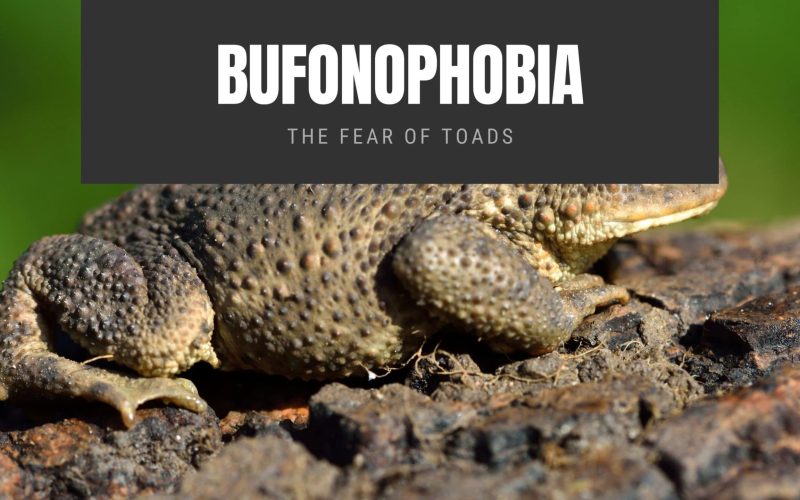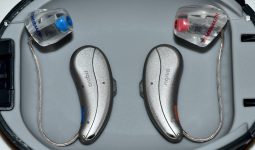Bufonophobia is an irrational fear of toads that can easily be triggered by the thought or sight of them.
Usually, someone who has this fear will be overly concerned with all kinds of toads. Things often get to a point where their fears can transcend into intense bouts of anxiety, which could also lead to them having panic attacks from their Bufonophobia.
However, this might not be the case with everyone with this fear because symptoms and magnitude of fear typically vary from patient to patient.
Someone who suffers from this phobia would conclude that toads are dirty amphibians that carry germs wherever they go.
Though their claims are usually right, their fear and anxiety are mostly out of touch with reality, and it’s one of the reasons they suffer the way they do.
Due to their fears, those who have this mental disorder usually avoid the object of their anxiety because the chances of suffering a full-blown panic attack seem imminent when faced with toads and other forms of amphibians.
This always seems irrational to people who don’t have this illness, but to someone who has Bufonophobia, it is very rational.
It is widespread for those with Bufonophobia and other mental disorders to make conscious decisions to stay away from areas where they might come in contact with toads or forests to help limit their contact with toads.
In the long run, this usually has an impact on their daily lives and their self-esteem.
Most patients with this phobia might know that their fear of the subject is entirely irrational.
Still, when faced with toads, the fear they feel is usually more significant, and they find it difficult to convince themselves of this.
There are cases where someone who has Bufonophobia has episodes of anxiety just from a picture of a toad or from a TV show.
In other words, one doesn’t always necessarily have to be faced with toads before anxiety kicks in.
Symptoms of Bufonophobia
Usually, all phobias tend to share common traits; Bufonophobia is also one of those mental disorders that are not exempted from the list of conditions with similar traits to other fears or phobias.
One of the signs is anxiety, and this could be extreme, depending on how severe the patient’s fears are. Their anxiety might be so intense that it would lead to them having a full-blown panic attack, just like was mentioned earlier.
They usually tend to make extreme decisions based on their phobia. For instance, they might decide to stay far away from rural areas and reside in big cities where they feel less likely to come in contact with a toad.
It is also very possible for someone suffering from Bufonophobia to develop other mental disorders like (GAD) Generalized Anxiety Disorder or (OCD) Obsessive-Compulsive Disorder.
If they continuously obsess over toads, then GAD and OCD are very conceivable.
Some of the signs that are experienced by people who have Bufonophobia include;
- Extreme anxiety while thinking of toads
- Intense anxiety when they come in contact with toads or other forms of amphibians
- Being unable to cope with their fear
- By thinking of toads, they get muscle tension, shakiness, and extreme sweat.
- Dry mouth
- Inability to articulate words
- Feeling faint
- Pain or tightness in the chest
- Choking sensation
- Nausea
- The rise in the blood level
- Hyperventilation
- Confusion or disorientation
- Numbness
Causes of Bufonophobia
The causes of Bufonophobia and other related phobias are somewhat unknown, and there is no proper documentation as to what these causes are. However, Doctors have been able to link it to environmental and genetic conditions.
These conditions uniquely shape how an individual thinks and how he is affected by various factors. If we study these conditions, we might uncover some interesting facts about Bufonophobia.
Another thing to consider is the patient’s family history. If he belongs to a family that has a mental illness, especially one that is related to a disorder or specific phobias, he might have a high chance of developing Bufonophobia or other forms of phobias, as their genetic makeup could be affected.
If some have the above predisposition, then it wouldn’t be uncommon for them to develop Bufonophobia; all that might be left is for them to go through an experience that would trigger the disorder itself.
In some cases, some people might have some form of mental disorder; for example, they might already have GAD or OCD.
In the presence of an already existing disorder, such people might be anxious in their everyday lives, so certain experiences might lead to a concentration of all their fears and anxiety on a toad, which invariably leads to having Bufonophobia.
Treatment of Bufonophobia
Treating Bufonophobia and other forms of mental disorders has not been easy because there are fewer studies or valid procedures that are helpful in the treatment of mental disorders.
However, some are worth listing.
Exposure Therapy
This is a form of therapy that is commonly used in treating various forms of anxiety. Exposure therapy (ET); its procedure is quite adequate, as people who have bufonophobia are gradually faced with situations where they have to come in contact with the object of their fear (toad).
But before they are exposed to their fears, they would first be made aware or be made to imagine themselves in a situation where they find themselves amid various toads.
The exposure Therapy mode of treatment is adopted by many mental disorder Doctors to help treat phobias and anxiety.
In the course of treating Bufonophobia, the Doctor might use some mediums, like pictures or various movies that portray toads and all kinds of amphibians; after some time, he might also have to introduce the patient to a living encounter with a toad.
This therapy is proposed to help people who have Bufonophobia get over their fear of toads cause the more they get exposed to what they are afraid of, the less scared they will be.
The Doctor who is treating the mental patient should be highly skilled in the treatment of phobias cause if the patient is exposed too soon or too much to the object of their fear, it might worsen their phobia.
It is possible that during this treatment, the patients might go through some form of anxiety, but they might not be aware that they are gradually telling themselves that there is nothing to fear from toads through exposure to toads.
This is the main aim of exposure therapy.
Anti Anxiety Medication
Anti-anxiety pills are pills that help to minimize the symptoms that are associated with phobias, particularly Bufonophobia, to treat people with a disorder that includes Bufonophobia.
Taking drugs is not always sufficient in the treatment of phobias, so the treatment is usually mixed with some skills that they had to learn and practice with a mental health professor.
Cognitive Behavioral Therapy CBT
Just like exposure therapy, CBT is a conventional treatment for various disorders, which includes Bufonophobia, most times it works for (GED) Generalized Anxiety Disorder or (OCD) Obsessive-Compulsive Disorder.
Aside from these, CBT is also said to be an excellent treatment for Bufonophobia.
Cognitive Behavioral Disorder is a form of treatment that the therapist employs to help patients uncover the reason behind their irrational fears of toads.
It helps them find the source of their fear of toads and uncover why they feel the way they do toward toads and some other amphibians; then, they can find a practical approach when faced with their fears.
Dialectical Behavior Therapy
Another form of treatment for Bufonophobia is (DBT). It is a treatment that’s meant for people with emotional changes, i.e., used to treat people who have a personality disorder.
It is seen as a way of treating Bupanophobia due to the way the sessions are done. Usually, patients learn various coping skills from the group session.
This treatment can last from three months to eight months and can have from two to ten people; it all depends on how many join the group.
Exercise for Bufonophobia
Daily exercise is known to be extremely beneficial for people who have various mental disorders, including Bufonophobia; cardiovascular exercise is one of the most effective exercises that are known to help reduce tensions.
Aerobic exercises and other forms of workout sessions have been said to help; they’re very effective at releasing some of the great chemicals in the human brain, such as endorphins.
Since stress is seen as a major course of anxiety, the Doctor has advised that regular exercise would yield a good result for Bufonophobia.








